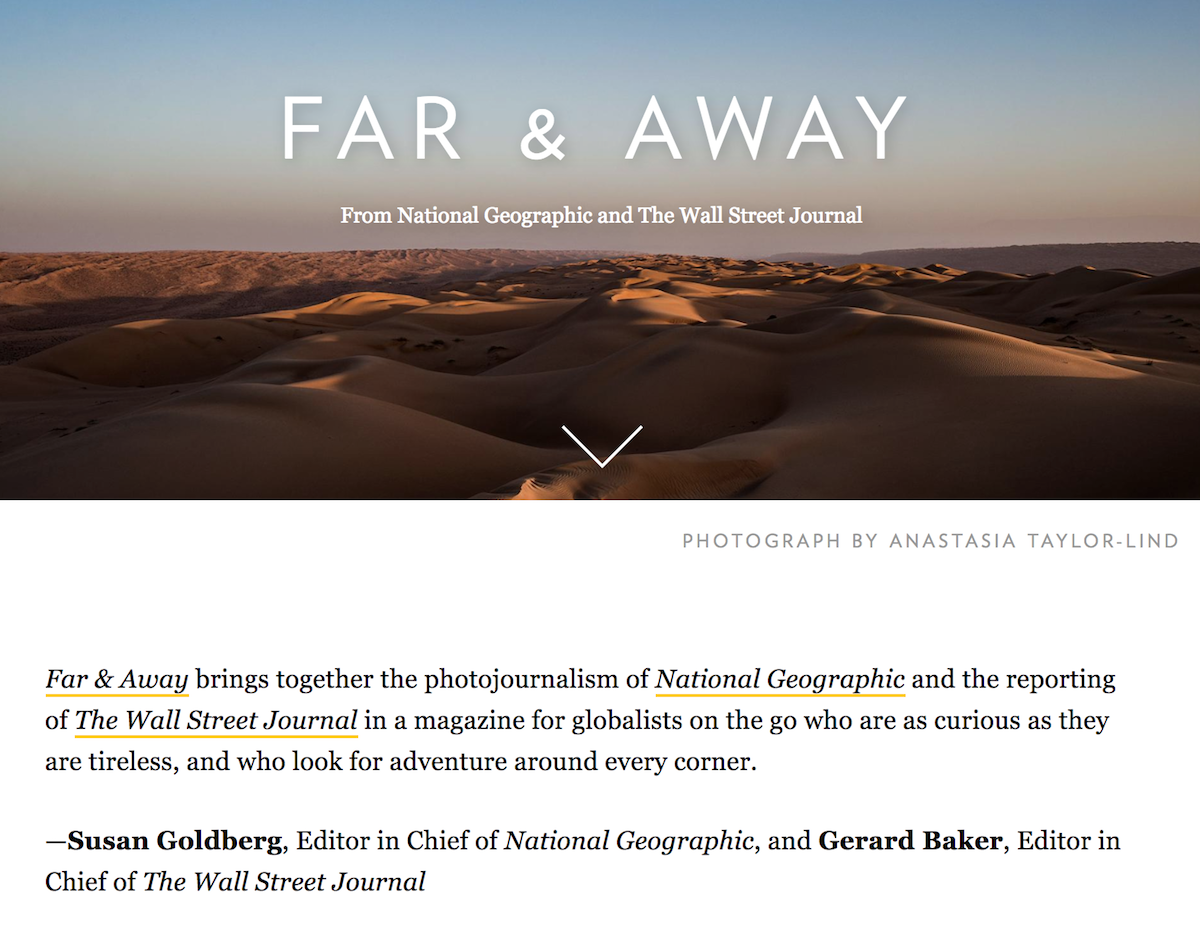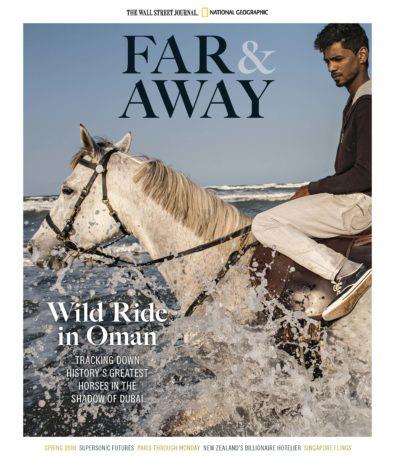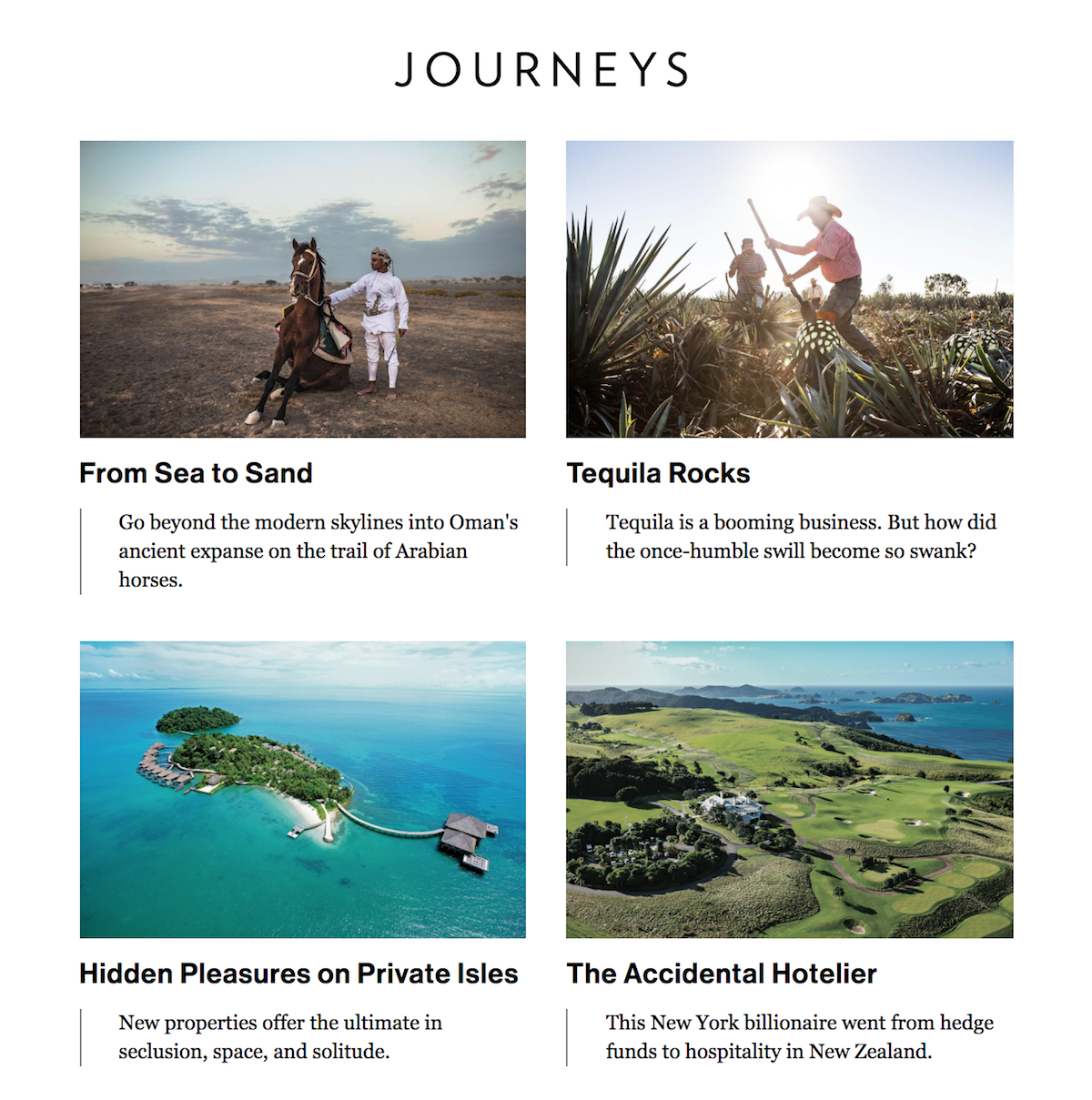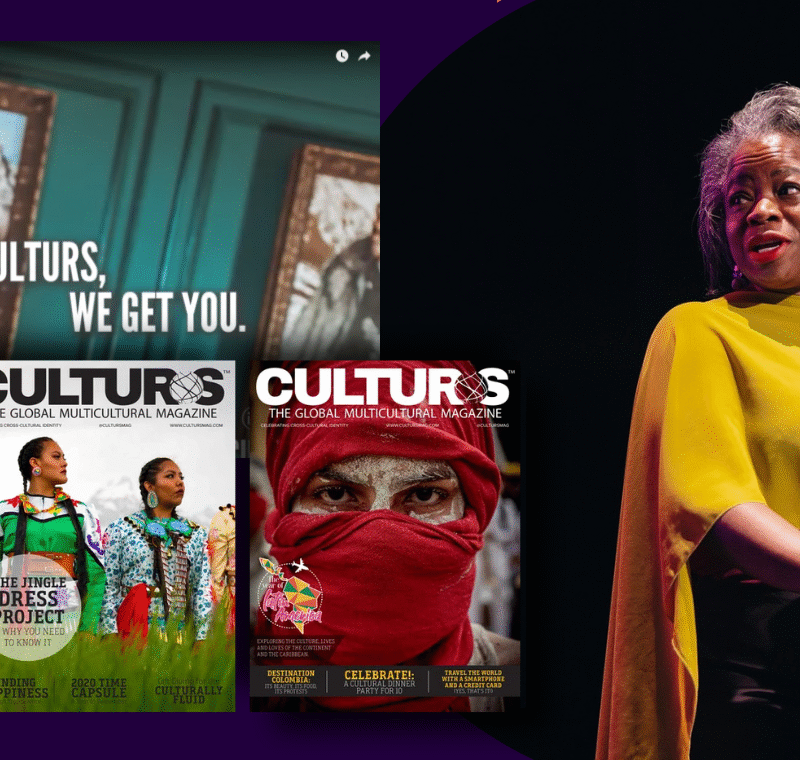Far & Away magazine: the result of NatGeo’s storytelling and WSJ’s global insights
The collaboration between the two, who are owned by the same company, began with a discussion of ways to create a publication that would bring together the visual storytelling of National Geographic and the global business reporting of The Wall Street Journal, explained Susan Goldberg, editorial director of National Geographic Partners and editor-in-chief of National Geographic magazine. “Gerry (Baker) and I and our respective teams started kicking around ideas and finally settled on Far & Away — a title that showcases the best of two great brands, in service of business travelers.”
 |
Most people are so busy these days, that as Goldberg explained, it makes sense to get the most of a work trip. Far & Away helps business travellers figure out what to do when their meetings are over.
“It’s helpful to have a magazine that’s geared specifically for business travelers to highlight surprises, discoveries, and worthwhile things to do while you’re there,” she said.
The idea was the easy part. Creating the actual magazine took much longer, Goldberg said. “Altogether, it was about a year from idea to publication,” she said. “We effectively merged two editorial and advertising teams to develop one new, multi-platform concept. I would not say that every single decision had to be made twice, but especially for the first issue, we had to work hard at communication and collaboration across two established brands. Then, our business sides had to introduce the concept to the market and get the traction needed to make our launch a success. Issue number two should be a lot easier.”
The magazine will report on cultural experiences, essential travel strategies, and insider intelligence for business trips. It features intelligent adventure and urban discovery for a selective audience of global travellers who are as curious as they are adventurous and give them the tools to combine business and leisure trips into one. Far & Away will also include digital content (found at NatGeoTravel.com/farandaway) and promotion across National Geographic Travel’s social platforms.
 |
As with a true collaboration, each brand brought their unique talents and strengths to the table. For National Geographic, it was visual storytelling. “Visual storytelling is our DNA. We bring National Geographic photographers, feature writers, magazine designers and—above all—a passion for exploration and cultural engagement,” Goldberg said. “The team from National Geographic Traveler—our 34-year-old travel title, which also happens to have the largest social following in travel media—also contribute travel intelligence and expansive social reach in print and online. This is a great way for us to reach out to new readers.”
The Wall Street Journal contributed global insights and information. For the first issue, the WSJ tapped many reporters and editors to pitch in with stories, editing and guidance, said Mike Miller, senior editor, Features and WSJ Weekend. The Wall Street Journal’s staff on call 24/7 was an unmatchable journalistic asset when putting together a magazine with ambitious and complicated stories about places all over the world, he said. “The WSJ has the smartest team of reporters and editors around the world,” Miller said. “We drew on many of them to make sure everything in Far & Away was insightful, newsy, accurate and trustworthy.”
Collaboration between the two brands wasn’t difficult, in fact, the partnership made sense for both National Geographic and The Wall Street Journal.
“We all grew up loving National Geographic as a portal into a world of gorgeous photography and adventure,” Miller said. “Now as journalists, my WSJ colleagues and I have huge respect for the Nat Geo team’s mastery of visual storytelling and journalism–how to deploy photos, maps and drawings–not to mention words–into beautiful and useful and high-impact magazine stories.”
“Far & Away is about what to do around the world when the meetings are over,” Goldberg responded. “Who better to answer that question than the Wall Street Journal reporters who live across the globe, know those communities and cover the people who attend those meetings?”
The year-long partnership was unusually harmonious, according to Miller, because each brands’ skills were so complementary, “and the Nat Geo team is so nice,” he said.
Goldberg agreed, saying the collaboration was delightful, and that their partners at WSJ were likeminded, relentless in pursuit of excellence, and simply the best at what they do. “In print, Far & Away is distributed to The Wall Street Journal audience, and no one knows that audience better than our partners,” she said.

Lessons
For publishers looking to collaborate across brands to create an entirely new publication, pop-up magazine or multiplatform project, both The Wall Street Journal and National Geographic offered some insight into their process.
“You have to be deliberate and determined about managing all the details across separate organisations, but also optimistic. This magazine is supposed to be fun; it’s about what happens after or around work. People are more than what they do, and if we apply the same curiosity that made us successful in our careers to our travels, imagine how far we can go and what we will discover!” Goldberg said. “The lesson of collaboration is that Far & Away could not happen with only Nat Geo, or only the WSJ. There’s a reason there’s an ampersand in the title: It’s complementary in every way, and we’re having fun while we’re at it!”
“I think the chief lesson is to be very, very picky about whom you collaborate with,” Miller said. “It only works if you truly admire one another. After that, you need clear structure and lots of open communication, but none of that works unless you start with a partner that adds real luster to your own work.”
More like this
How drones get impossible shots for Bonnier and National Geographic
Brands as media owners: how Thomas Cook took creative control of its branding strategy
National Geographic and Wall Street Journal enter multi-platform collaboration
BBC Travel – how multimedia galleries are (not) changing good storytelling







